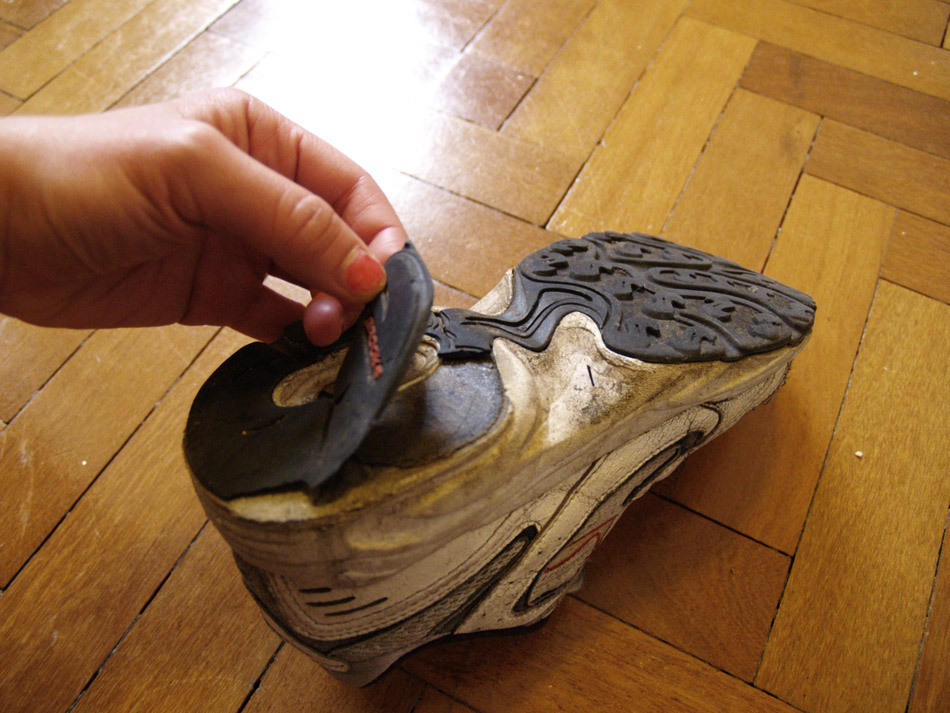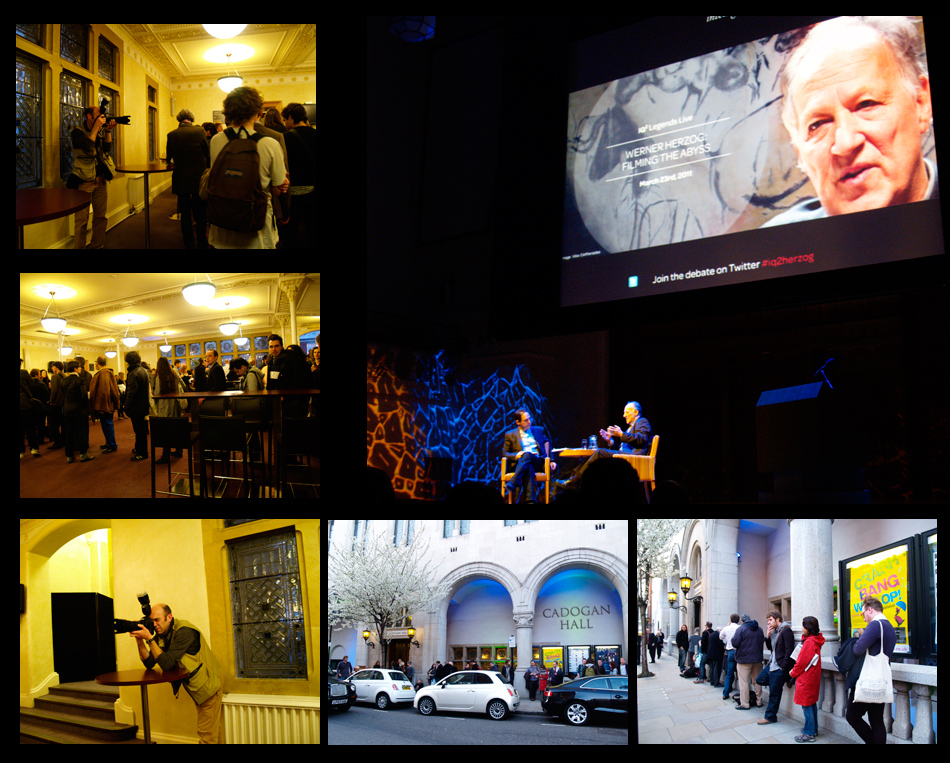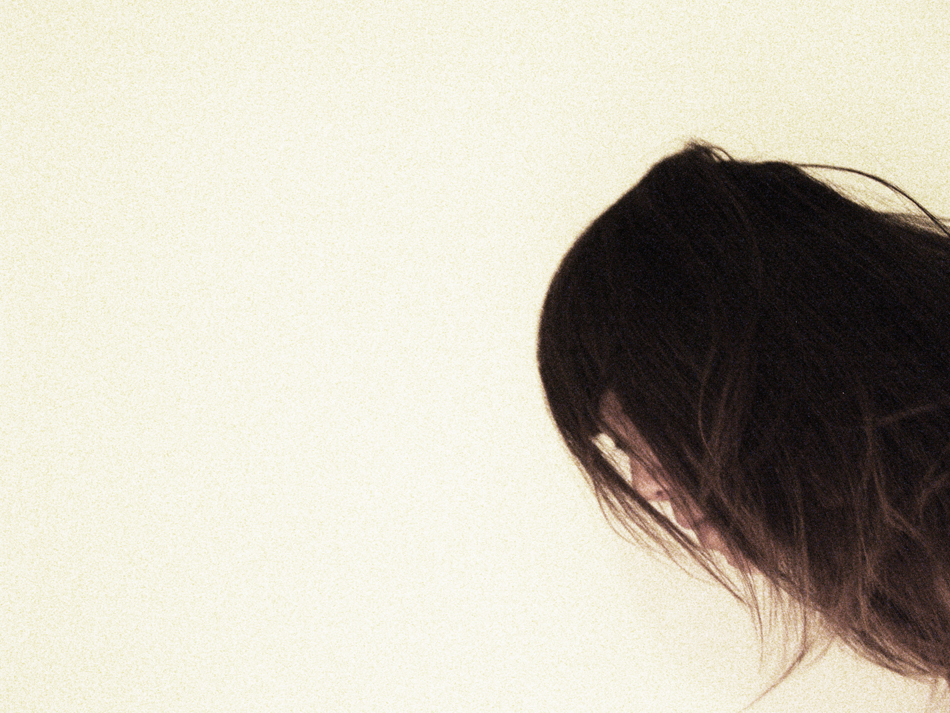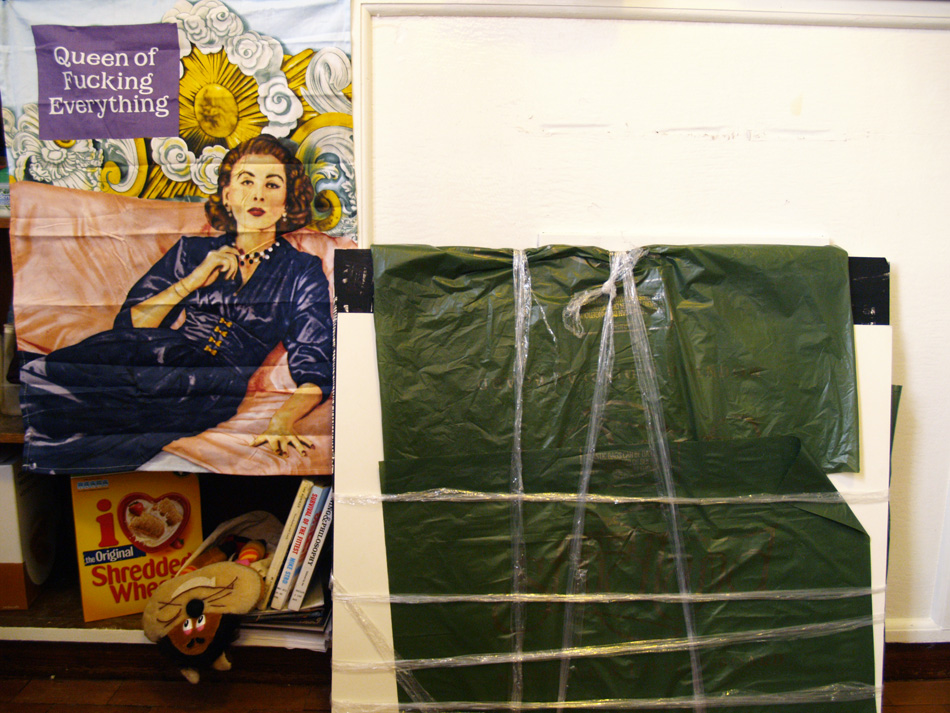WERNER HERZOG (‘My mandate is poetry. Period.’) WAS CHARMING, AS EXPECTED. Unexpected: technical cockup, and a very cocky ‘interviewer’ who should be subjected to a Kinski rant, 23 March 2011.
In the midst of a mid-journey lassitude and systematic switching-off-of-things-&-people, we came across the astounding news that the legendary German auteur Werner Herzog was visiting Nondon. The many powerful works of the poet-philosopher (our favourite include Fitzcarraldo, Even Dwarfs Started Small, the Enigma of Kasper Hauser, My Best Fiend and Heart of Glass) have long haunted/irritated/angered/moved/inspired/stirred us across our many lifetimes. Magical as they are polemical, we have always made at least one of his films compulsory viewing for our students in our previous lives. As we run, out of breath, and everywhere we run, anytime we run, across lands, ages, cultures and political circumstances, Herzog is one we turn to whenever we feel that we are losing our bearings (Other guides we turn to include Tarkovsky, Chris Marker, Apichatpong, EM Cioran, Pessoa, Chagall, Bach, Beethoven, Barthes, Tristram Shandy, Maguerite Duras, Samuel Beckett). (Not that losing one’s bearings is a bad thing, for not being clear, being confused, having doubts, being torn both and all sides leftrightcentre by opposing sentiments, being pissed off, being irritated by pesky things, finding everything and everybody pesky, feeling lethargic, and hitting of walls are vital parts of any meaningful process of working.) We have had the privilege of encountering Herzog in the flesh in a previous life and were, as expected, charmed by Herzog ‘live’ (a very polished, calculated performance by the maestro no doubt). Hence, when the chance to catch him again here, in Nondon, in this life, popped up, we ran for it. Literally.
2 things spoiled our evening: 1) repeated technical cock-ups: The microphones registered a noise throughout, and the projector failed to work at a few points. For a £30 ticket in a grand, 900-seater situated in the posh Belgravia, such flaws were surely unforgivable – not to mention utterly embarassing, in the presence of a top-notch filmmaker; not to mention too that many in the crowd were clearly people with professional relationships to the film/cultural industry in one way or another (everyone of whom was polite- in the pictures above, look at the neat queues we form the entire evening as we patiently awaited for the doors to open!). To say the least, this was a booboo, big time. 2) The next thing that spoiled our evening was the interviewer. Or ‘interviewer’, so-called. Aware that there are many young (what society labels as ‘underaged’ and ‘vulnerable’?) people who read this running blog, we shall sum up the work of this interviewer as such: very, very, very, very, very, very cr*p’ that evening (or all evenings? and day times?). Let us explain (for we are responsible adults [470days-old as we are, out of our 1000-day lifespan) who support any claims of ours, however obvious, with studiously-crafted elucidations). Although it was alleged (by the interviewer) that the interviewer had worked with Herzog on several occassions before, and that the interviewer and the filmmaker are personal friends (another allegation put forward by the interviewer himself, with comments such as ‘your wife told me that …’), the interviewer did not seem to have done enough homework, and was even disrepectful to his subject: Not only did he abruptly interrupt Herzog throughout the 2.5 hours, he would look at his watch in an obvious manner. We are disinterested in interviewers who are only fawning to their subject (even if for the goal of ‘getting more’ out of them), but this really felt profoundly wrong and cringe-inducing, for, the interviewer seemed to try way too hard in getting across his own agenda – that is, that he, and not just his celebrity subjects, had a personality, too – which only goes to show his own insecurity and incompetence (the personality of the best interviewers/interpretants would naturally shine through – see Jeremy Paxman, Jon Snow and Glenn Gould for instance). There was no effort whatsoever from the interviewer to build a rapport/chemistry/lively tension with his subject. And, when the projector broke down, said interviewer even went on hissy fits – as if he was the star of the show and the one being allowed to have hissy fits – and Herzog even calmed him down. In classic Herzog-ian manner, the filmmaker returned the frivololity, rudeness with a picture of calm, no doubt honed for several years by his fiery working relationship with the superbly brilliant but/and supremely mad Klaus Kinski. Herzog was above the petty and attention-seeking tactics of the interviewer, towards whom we feel not anger but sympathy – for feeling the need to do what he did. So what if this same interviewer is said to have interviewed several big names? This one gig he did that we saw was, simply put, not interesting. Not interesting at all. And it seems that we are far from alone in our evaluation of the interviewer’s diabolical performance for the evening.
Speaking of diabolicalness and human foibles, we leave us with Herzog’s quote: that ‘the common denominator of the Universe is not harmony, but chaos, hostility and murder’.
Cycles of British Summer Times, cycles of growths of hair (and nostril hairs, and armpit hairs, and mould, and toenails, and teeth, and earlobes, and laugh lines, and tear lines, ley lines, hemlines): WHAT HAPPENS TO PEOPLE WHO HAVE NOT HAD A HAIRCUT FOR AN ENTIRE LIFETIME?
What happens to people who have not had a haircut for 470 days? They end up bushy and flustered, wishing an earlier death than the last day of the Nondon Olympics (09.09.2012) so that they can enjoy the catharsis of a purge of (the) burden (of excessive foliage). (To be sure, many things cease growing when one is dead, hair included.) (And, to be sure, we have had to trim our fringe/bangs every now and then (every 3 weeks, really) in the past 470 days- freeing our eyes from follicle curtains.)
After Tehching Hsieh.
PS: Happy British Summer Time. Goodbye wintry cloudiness. Hello sunny lucidity. Runnnnnnnnnnnnnnnnnnnnn.
PPS: WE ARE STILL TRYING TO RAISE MONEY FOR OUR RUN FOR SHELTER FOR THE 2011 NONDON MARATHON! DO LEND US A HAND! OR TOE! OR DOLE! OR DOUGH! IT’S THE FINAL LAP OF COLLECTION: WE ARE TRYING TO COLLECT THE FINAL £342! SO PLEASE HELP. Training-wise, we have been doing 35km (by looping around the Regents Fark, our favourite Fark in Nondon, swimming amongst the cherry blossom petals very poetically, smelling the roses, talking to the giraffes, kicking babies in their strollers and their parents blocking the pavements on their way to the overcharged zoo, performing our kungfu levitational-sidestepping of fecal deposits by horses, dogs and again the irresponsible and silly young parents, smiling back at fit cops and fellow runners (them probably trying to hold back their guffaws at the sight of our inelegant gait of wildly flapping arms and thundery steps – FEE! FI! FO! FUM!), making a gurning & constipated face at anyone else unfit, cursing & projectile-spitting at builders, fat middle-aged uglies and other uglies who make crass (insect-like? rat-like? try harder!) sounds or say crass things (‘Saucy’! ‘Slow down love!’) when we run by, looking ahead at the 2cm ahead of us, one step, at a time, for we are short and short-sighted), and are tapering down (AND CARBO-LOADING UP!!!!!!!!! YAYYYY!!! More chocolates please! And cheesecakes! And Moet! And Chandon! And roasted pecan nuts! And frothy cappuccino! And salmon!) for the next 28 days, before race-day on 17 April 2011 Sunday. We are terribly excited about the big day and hope to see you along the 42km scenic route – ON THE CONDITION THAT YOUR PRESENCE ADDS TO THE SCENERY! So, please do not come if you are ugly, or consider yourself aesthetically-challenged. Unless we run with hair as shown in the picture above, in which case you can look as you please and we will not be distracted. Which is why we do our hair like this, because we do not claim to be un-aesthetically-unchallenged. Forget it, please come, every body. Come together. Right Now. Over us. With us. Along us. Without our spectacles and with us Bolting so quickly in our splendid Shelter vest everyone will register as a blur. Wooosh. We are lying of course. We run about 2cm every 20 seconds. We do our best. Our mind is willing – more than willing. But, alas, our legs can only do that much. We are only that long. Or short. We have more excuses, of course – for instance a persistent painful protrusion on our left feet, tendonities on both legs when we are not careful, and so on. Nothing new. So. See you soon(er). Or later. See you around. And round. And in our next lives (will we recognise you better then? And vice versa??)
RUNNING = LIVING = RUNNING. BUT WHEN WE HIT THE WALL MID-JOURNEY, HOW CAN WE FIND THE STAMINA TO COMPLETE IT?

Broken. (Super-)Glued several times, but falling apart (looped, like a broken record, like living, like the cycles of life and death, like dying, like running, like running on quicksand, like running on slowsand, like not running, but running, still).
For me running is both exercise and a metaphor. Running day after day, piling up the races, bit by bit, I raise the bar, and by clearing each level I elevate myself. at least that’s why I put in effort day after day: to raise my own level. […] The point is whether or not I improved over yesterday. In long-distance running the only opponent you have to beat is yourself, the way you used to be.[1]
We journey forwards to the finishing line in a running session (or at the completion of a race, which is the epitome of a running session, with set rules and a clear beginning and closure). In life, we journey towards the finishing line of death. In the process, like writer Haruki Murakami, we desire improvement and progress in any given run, as we do in life itself. Yet, any long-distance runner also understands the dictum that when we run, we are essentially running against ourselves (and not our fellow runners). As Bernd Heinrich states of his record-breaking championship in the 1981 ultra-marathon, he was running it ‘all by myself, against myself’; ‘I’d done the best that I knew how at the time. That’s what mattered to me.’ [2] Contrary to the short distance sprint, the emphasis of the long-distance run is its process. Given the strenuous nature of running, pain and exhaustion are the Achilles heels of any runner, capable of literally and metaphorically bringing us to our knees. Especially in the case of ultra-running (of distances above 42km), it is when our body and mind are pushed so far that we are reminded of our limitation, vulnerability, and indeed, mortality. For Murakami, ‘learning something essential in life requires physical pain’ in most cases.[3] Yet, while ‘the hurt part is an unavoidable reality’, what matters is how we respond to this pain.[4] Thus, ‘[p]ain is inevitable. Suffering is optional’.[5].In bringing us close to death, pain is that which reminds us that we are alive. We run after pain because it reminds us of our mortality. An undertaking such as endurance running fulfils this basic instinct of ours. Like the endurance hunt, the race becomes a metaphor for life and death, except that instead of competing against the nimble antelope, we are fighting against ourselves, outrunning our own limitations. No stranger to pain, Murakami states that it is ‘precisely because of the pain, precisely because we want to overcome that pain, that we can get the feeling, […]of really being alive – or at least a partial sense of it.’[6] Hence, that which is at stake as we journey in the process of a run or life itself is how we respond to the ups and downs that confront us along the way. In another words, how we negotiate, manage and navigate our runs, and, indeed, our lives —which is the question that we are addressing in our thesis of Trans-dimensional Running For Our Lives! A Rough Guide to a Critical Strategy for our Technologically-Layered Multiverse .
In fact, Murakami’s What I Talk About When I Talk About Running can be read as a poetic discourse of the activity of running as a means to negotiate, manage and navigate his life and mortality itself.[7] Over a collection of essays, he discusses his peak as a runner (and writer), and contemplates about his own physical decline as a runner as he grows older.[8] In contrast to the image of a highly-successful novelist and athlete, the essays reveals Murakami as one ridden with anxieties and self-doubt about (his) existence. In tones not dissimilar to Antoine’s epiphanic laments in Jean-Paul Sartre’s existential textbook Nausea, Murakami ponders about whether he has overcome his ‘shortcomings’ as he ages (‘now here I am living in this unimaginable world’;[9] ‘wretched sort of feeling’;[10] ‘struck by how pitiful n pointless this little container called me is, what a lame, shabby being I am’;[11] ‘sad spreadsheet of my life that reveals how much my debts far outweigh my assets’[12]). In a particularly poignant (and humorous) passage, Murakami describes watching ‘young blonde girls’ swinging their ponytails ‘proudly’ as they run, and distils from it the metaphor of how ‘one generation takes over from the next’. He allows them to overtake him, for they have different sense of time, which is ‘the way it should be’.[13] For Murakami, ‘this is how the world is handed over in this world’. He continues to run his own run —and his own life— and comes to terms with (his) mortality:
[…] I doubt I’ll ever be able to run the way I used to. I’m ready to accept that. […] And time does its job much more faithfully, much more accurately, than I ever do. Ever since time began (when was that, I wonder?), it’s been moving ever forward without a moment’s rest. And one of the privileges given to those who’ve avoided dying young is the blessed right to grow old. The honour of physical decline is waiting, and you have to get used to that reality.[14]
[1] Haruki Murakami, What I Talk About When I Talk About Running (Random House Inc., 2009). p. 10.
[2] Bernd Heinrich, Why We Run: A Natural History, Reprint (Harper Perennial, 2002). p. 266.
[3] Murakami, p. 140.
[4] Murakami, p. vii.
[5] Murakami, p. vii.
[6] Murakami, p. 171.
[7] Thirty-three —which he notes was the age that Jesus Christ died and Scott Fitzgerald began to decline— was the age that Murakami picked up running (as well as his ‘belated, but real starting point as a novelist’). Murakami, p. 47.
[8] Murakami, p. 11.
[9] Murakami, p. 18.
[10] Murakami, p. 152.
[11] Murakami, p. 152.
[12] Murakami, p. 152.
[13] Murakami, p. 94.
[14] Murakami, p. 121.
AN PICTURE OF ENCOURAGEMENT TO ALL OUR FRIENDS IN JAPAN. 日本の皆様、頑張ってください。
As it did when 9/11 ‘happened’, we were confused, unable to grasp the gravity of the news of the tsunami. As Virilio, Baudrillard and others have already analysed, the endless stream of video footage that were downloaded onto the screens that litter our Life 1.0 (TV, computer, smartphones et al) seem to literally and metaphorically bring home images that we have previously seen in the most ostentatious video games and Hollywood blockbusters (so much so that a journalist from a free tabloid has coined the term ‘earthquake porn‘ to describe our consumption of such imagery – but this term is as gratuitous and unnecessary and insensitive as pornography itself). Because, or in spite of the fact that we are inundated with such imagery, that there was/is no way we could fathom the reality of the disaster as it struck, as it unfolded, as it was unfolding, and as its repercussions continue to unravel, amidst the media filters (which includes smokescreens, distortions, lies, embellishments).
The metaphorical and literal collision between the fictitious and the actual is all the more stark as we recall how the notion of ‘The Big One’ was etched into the consciousness of any resident of Japan ever since such an event had been predicted: other than regular emergency drills, every one is taught what to do and where to go, etc, when a major earthquake strikes. Yet, no matter how prepared one is, no matter how often one experiences quakes on a daily basis, no matter how much the notion of the possibility of such a disaster is ingrained in one’s day-to-day consciousness, one is never sufficiently prepared emotionally. That we had, in a previous life, visited and stayed in Fukushima with a mentor, composer/laptop artist Professor Christophe Charles (with whom we have had the honour to collaborate with many many times) to stage a ‘live’ performance, and recorded videos of the very nuclear plants as we walked around the city also makes the news of the tsunami all the more difficult to grasp and comprehend. As the news unfolded, or rather, as we watched the alarming images of the destruction played and replayed before our eyes, we burst into tears, but what do we know? What can we really know? What can we possibly understand, as mere consumers of the media images and texts, and as a worried friend reading detailed and heartwarming email replies from our friends on the ground – albeit from a safe distance?
When news of the tsunami hit us, we were on the road, and this was one of the photographs that we snapped that day – a clear, crisp sunny day it was. Image-makers that we are (that said, everyone is, if not an artist in Beuy’s formulation, an image-maker today) we have nonetheless been extremely affected by the terrifying images of the tsunami we saw. (Hence) Here is one image we have created, as a response- an image of hope. Our dear friends in Japan, our dearest friends of the film and art communities in Yamagata, Tokyo and Beppu, our professors, tutors, colleagues at the Musashino Art University, all our friends, mentors, colleagues who had supported, encouraged, challenged, taught, critiqued, criticised and loved us, people old and young from all walks of life whom we had the fortune to encounter as we travelled all over the islands via rail in Summer 2004, the fellow swimmers and lifeguards of the swimming pools in Fuchu and Kodaira, and everyone else we have met met in the three years that we lived, worked, swam, and islandhopped throughout the archipelago: please stay bright! Our time in Japan was a powerful episode of our lives, deeply challenging as it was beautiful – beautiful largely due to the wide range of amazing people – including the many artists, filmmakers, composers, dancers – we have met and worked with along the way. Itinerant and independent runners that we are of this and other lives, it is the amazing people we run into along these journeys that make our experiences so meaningful and powerful. Our dearest friends in Japan, we do not stop thinking of you and pray for your safety, resilience and strength. Although we are now in a different place literally and metaphorically, and a different life, as a different being, we are a sum of all our previous experiences, because of you. We are running our daily runs, thinking of you. ???????????????????????
** THERE ARE MANY WAYS TO HELP – PLEASE SHOW OUR SUPPORT **
NEAR-DEATHS BY CHOCOLATE: KAIDIE’S BATTLES WITH THE NEMESES (courtesy of JAMES ODLING-SMEE!)
In the past 450 days of our existence/run/adventures/quest for the Meaning of Life, we have been kidnapped, looked for love, found epiphanic enjoyment from the whiffs of aphrodisiac sausages in a Turkish Cafe, run a few races, fallen, fallen ill, ran in other cities, and battled ferociously against chocolate nemeses. The said cocoa-objects-of-desire-and-death have been provided online by one of our dearest co-runners, our Facebook Friend, Mister James Odling-Smee on several occasions as seen in the above images.
The latest Chocolate Nemesis baked lovingly by the multi-talented Mister Odling-Smee was supplied not in Life 2.0 online, but here and now in Life 1,0, in the primary world of observable and edible phenomena. Seen here is Herr Joerg Leib, clearly a man of the world as evidenced in the large map of the world decorating his natural habitat, and a mutual friend of the real life proxy of us and (the real life proxy of) Mister Odling-Smee. Who in this googleearth would have thought that out of the zillions of people of this and other worlds, and millions of people of Nondon, that the two Life 1.0, physical strangers but [?] Life 2.0 virtual friends of Mister Odling-Smee and Yours Truly share a mutual Life 1.0 friend – and in the form of Herr Leib!? Here the latter is seen holding a large cow-patterned tin, in which throbbed a heartstoppingly scrumptious Chocolate Nemesis. It was weeks of careful, 007-MI5-CIA-Mossad-KGB-level planning that the final transaction took place. Last Thursday, we finally came face to face with our Nemesis – the noun ‘cake’ seems a gross understatement, for the Chocolate Nemesis was so dense, so moist, so filled with goodness that every mouthful was heavenly. More than heavenly, if such a phenomena might be possible. It was neither too sweet nor too bitter, of a flavour that would please the hardest-core chocoholics of Life 1.0 and beyond. We demolished the cake with tremendous relish – and by Day 4 (Sunday) the battle was over. James Odling-Smee’s Out-Of-The-World Chocolate Nemesis won, many times over. We were floored. In ecstasy. We happily admitted defeat.
Many, many thanks to our middle-man-messenger Herr Leib, and many million more thanks to our wonderful baker-friend-co-runner James Odling- Smee. That is all we can say, as we run in our runny choco-intoxication.
30 DAYS TO RAISE THE FINAL £342 FOR OUR RUN FOR SHELTER AT THE 2011 NONDON MARATHON.

It costs £10 to print our name on the vest (£1.67 each alphabet!!) so at the meantime, we have printed our name digitally - free of charge!
Here we are in the Shelter vest that we will wear on 17 April Sunday at the 2011 Nondon Marathon. Thanks to the wonderfully generous support of 38 of you in the past 3 months, we have raised £1158 for the housing and homelessness charity. With your blackmail, we have been training steadily, clocking in 3 hours for 30km. That said, we may reach the destination at 1pm, which is 4 hours after we begin running the 42km, or Tuesday morning at 40 hours after we take off. In the next 30 days, we hope to raise our final £342. This afternoon, STEPHEN WARD, who sells fruits in front of the Goodge Street station and who is also a runner, very kindly donated £10 for our effort! THANK YOU STEPHEN!!
** As we run we try to make sense of what has just unfolded and is unfolding in Japan – and can not yet make sense of the scale of devastation. This was where we lived in a previous life for 3 years, and during when there were constant reminders of the preparation of ‘the big one’, along with countless drills. Yet, no rehearsal or preparation can help us come to terms with what the magnificent destruction. Let us also find ways to help and do what we can: click here to see how we can show our support. **
WHY RUNNING ALONE IS THE BEST/ONLY WAY TO RUN: Like Murakami, Turing and Colin, we run because we seek solitude. We are solitary beings; hence we run long distances. Go on, call us selfish.

We (prefer to) live, run and die alone: in the plastic dustbin of history. Nonetheless, nice to meet you. Nice to have met you. Nice meeting you. WC1 Nondon Spring 2011.
The narrative of human beings is (or, we should say ‘the narratives of human beings are’) populated / infested by wandering hermits – St Jerome, Anthony of Egypt, Basho, Jesus Christ, Lao Zi, Buddha, Confucius, Mencius, Chatwin, are but some of the named itinerants who have been recorded and mythologised, and have captured our imagination. There have been many more unnamed. As they traversed the world(s), they meditated, wrote, spoke, sang and came to terms with their being, in one way or another. (Or not – and spend their lives making tours and detours, making false moves and dying pathetically, rotten, sickly, unenlightened, bitter, as sickbags, like the rest of us). To be sure, the story of mankind (which sounds rather grand, does it not?) is also populated by the gregarious, the socially-adept, those who prefer direct action, so on, and so forth. Which is exactly the/our point – the so on and so forth-ness of things – that there are different paths each prefers. Each of us has different means of getting there; each of us has different paths that works for us. We respect yours, and you, presumably, ours. When we cross paths and run into each other, we may fight, have a tussle, a tumble, or two, or more, a war, civil, or uncivilised, or cold, or silent, or ongoing and unresolved. Or, we may sparkle, together, shine, tango constructively and powerfully, like the clash of civilisations, meeting of 2 different chemicals to produce a third, new, synthetic (in all meanings of this word) possibility. Or, more mundanely, it is the combination of the above 2: a process, of a mixture of curiosity and argument, debates and agreements, hits and misses, fall outs and make ups, negotiation and mediation (‘compromise’ is a word we loathe, for it is less constructive but a giving-in, a weakening. The best, or rather ‘best’ encounters are not weakenings, but processes of strengthening. In the ideal world). At the meantime, we blame each other for intruding into our lives, as we confusedly try to work it out, yet, also, perhaps, at the back of our minds understand/believe that something interesting, something larger than each of us alone, something more wonderful and further than what each alone can achieve or where each could travel/go. Hence we work on it. Or not, should we run out of stamina. (Or faith? If there is such a thing, that is! Baaaaaaaaaaaaaaaaaaaaah.)
Screw this – this thread sounds romantic, old-fashioned, esoteric, irrelevant and plain silly.
Enough rambling.
Let us get back on track.
Restart (contemporarised, main-streamified):
The nature of long-distance running over hours and hours almost demands that it is a solo undertaking. For world champion marathon runner Paula Radcliffe, while there are times when running can be ‘a big social thing – go for a run, catch up with friends and have a really good chat’,[1] running for her remains a primarily solitary activity, ‘during which I just […] have my time.’[2] To be sure, we can run with pace-makers or pacers, whose task is support runners to ensure that we are not over- or under-exerting ourselves. In particularly demanding races such as ultra-marathons, during which runners can become so exhausted as to encounter hallucinations or lose consciousness, such collaborations can be a matter of life and death. As Christopher McDougall says, ‘a tough pacer can save your race; a sharp one can save your life’.[3] Yet, the writer and ultra-marathoner also refer to pace-makers condescendingly as ‘mules’, adding that ‘[p]acing is so gruelling and thankless that only family, fools and damn good friends let themselves get talked into it.’[4] Hence, if we wish to make (sporty) new friends, the conditions circumscribed by activities such as soccer, aqua-aerobics or the physically-gentler activity of walking seem more promising.
The solitary nature of long distance running in Life 1.0 is epitomised in (and mythologised by) the title of the book and film, The Loneliness of the Long Distance Runner. In this ‘Kitchen Sink’ classic[5] written by Alan Sillitoe in 1959, it is during our protagonist Colin’s solo runs that he is able to have ‘his time’, away from the physical, emotional and economical confines of his reality, including the Borstal prison to which he was confined to. Indeed, running was said to have been the ideal activity for Alan Turing, as it mirrored the loneliness of his journey as a scientist.[6] Given that such intellectual and creative work demands intense concentration, there are scientists as well as artists who may prefer working in isolation. (That said, there are clearly many who prefer to work collaboratively.) (Clearly, too, is that there are not so many artists who undertake endurance sports, apart from enduring many hours of debauchery, which we excel in as well). The same intensity required of a scientist’s creative process is not dissimilar to that of an artist or writer. As a matter of fact, novelist and marathon runner Haruki Murakami admits that he actively seeks out solitude, and grants that ‘especially for someone in my line of work, solitude is, more or less, an inevitable circumstance.’[7] Running suits him perfectly, as ‘[a]ll you need is a pair of running shoes and you can do it anywhere. It does not require anybody to do it with […].[8] He adds:
I’m the type of person who doesn’t find it painful to be alone. I find spending an hour or two everyday running alone, not speaking to anyone, we well as four or five hours alone at my desk, to be neither difficult nor boring. [9]
This is our chosen way of life. This is how we run (navigate, negotiate and manage) the/our world(s). We are neither Buddha nor Jesus (in case you didn’t know), but Christ!, to each her own. Just as there are those who prefer to travel alone, there are those who love it communal; just as there are lonely long-distance runners, there are sprinters who fear loneliness (and then of course, there are those who prefer other modes of locomotion to running, and then those who prefer not to move at all. Which is all fine. We say ‘fine’, though it is of course not up to us really. Not at all. Nor do we bother, though our job is to spread the gospel of our world-shattering thesis of trans-dimensional running, which is what we have been going on and on about, though of course, that is an other story, and we may not want to go into that again, not just now, any ways. Which we ourselves are getting extremely tired of as well. In any case – which ever ways. What we want to say is, at the end of the day, to each her own).
Go on, call us selfish. Like it or not, we are moving on. Take it. Leave it. Which ever. May we cross paths again. Or maybe not. See you later. If ever.
[1] Patrick Barkham, ‘Patrick Barkham Goes Running with Paula Radcliffe’, The Guardian, 16 December 2008, section Life and style <http://www.guardian.co.uk/sport/2008/dec/16/paula-radcliffe> [accessed 25 September 2010].
[2] Barkham.
[3] Christopher McDougall, Born to Run: The Hidden Tribe, the Ultra-Runners, and the Greatest Race the World Has Never Seen (Profile Books, 2010), p. 88.
[4] McDougall, p. 89.
[5] The Kitchen Sink genre refers to the British cultural movement of the 1950s-60s. The social-realist works, created by filmmakers and writers called ‘Angry Young Men’, are anti-Romantic, often featuring (anti-)heroes of the working class who are anti-establishment. ‘Author Alan Sillitoe Dies Aged 82’, BBC, 25 April 2010, section Entertainment <http://news.bbc.co.uk/1/hi/uk/8642720.stm> [accessed 31 October 2010].
[6] Anish Chandy, ‘Alan Turing Biography’, Buzzle.com <http://www.buzzle.com/editorials/4-5-2005-68126.asp> [accessed 12 July 2010].
[7] Like Murakami, Turing was also known to be a loner, although it could be argued also that this is in part due to his inability to live as he wished because of his sexual orientation (homosexuality being a crime in the 1950s in the United Kingdom).
[8] Yishane Lee, ‘Haruki Murakami Interview from Runner’s World.com’, 2004 <http://www.runnersworld.com/article/0,7120,s6-243-297–8908-0,00.html> [accessed 26 September 2010].
[9] Haruki Murakami, What I Talk About When I Talk About Running, Reprint (Harvill Secker, 2008), p. 15.
LETTER TO THE DEAD
How are you? […] Look, I am your beloved on earth, so fight for me, intercede for my name! … Drive off illness of my limbs! May you appear for me as a blessed one before me, that I may see you fighting for me in a dream […].
Written on a funerary stela or inscribed tablet,circa 2100 BC. As seen at the enchanting Ancient Egyptian Book of the Dead: Journey through the Afterlife, seen recently at the British Museum, in preparation of our (impending?) death.
Come to the SYMPOSIUM AND EXHIBITION 2-4 MARCH (private view 4 March 18:00hrs) SURPLUS TO REQUIREMENTS? Slade School of Fine Art Research Centre Nondon WC1H 0AB. SEE YOU!
Spring hits Nondon as she starts to come face to face with deep cuts introduced by the ConDem government, including to Arts and Humanities in higher education. (Is art a surplus to requirement? Why should anyone moan about cuts to the arts, when so many other more fundamental aspects of living are affected? Are the cuts to the arts justified? Is art a privilege in these economic times? Is art a privilege in any economic times? Is art education a right? Is education a right? Is education a privilege? Is art education a privilege? Is research in Arts and Humanities a right or a privilege? What is the value of such research? How do we measure the contribution of the Arts and Humanities research? … …) Will our Kaidie be a victim of the cuts, or will Kaidie stand/run strong against all adversities and strike back, defiantly? Come and help us decide our next move. We premiere a diptych, here shown under wraps in our humble abode (even though we are neither humble nor modest about our abode, and are merely using ‘humble abode’ as a stock phrase, just as we say things like ‘cotton light’ or ”pitch black’ even if lightness is not cottony and more, say, stony, or blackness is not ‘pitch’, when ‘stitch black’ sounds more, well, intriguing, possibly causing more frission … ). Come to the Surplus To Requirements? exhibition and symposium organised by the PhD students of the Slade School of Dine Art, University College Nondon. We will be at the site to sell our prints to raise the final £405 for our run for Shelter at the 2011 Nondon Marathon, as well as to meet with you, of course. See you at the Private View on 3rd March 18:00-20:00hrs Thursday.







